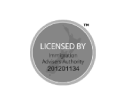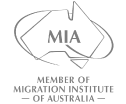Australia’s Skilled Work Regional visa (subclass 491) serves as a critical gateway for skilled professionals seeking long-term residency through regional employment and community integration. This provisional visa not only addresses labor shortages in designated areas but also creates a structured five-year pathway to permanent residency (PR) via the subclass 191 visa. Navigating this transition requires a nuanced understanding of regional compliance, income thresholds, and strategic planning to meet Australia’s evolving migration priorities.
Understanding the Subclass 491 Visa Framework
Eligibility and Pathways to Nomination
The subclass 491 visa is a points-tested provisional visa requiring either state nomination or family sponsorship. Key eligibility criteria include:
- Age: Applicants must be under 45 at the time of invitation[2].
- Occupation: Nomination in an occupation listed on the NSW Regional Skills List or equivalent state lists[10].
- Skills Assessment: A positive assessment from the relevant authority for the nominated occupation[2].
- English Proficiency: At least competent English (IELTS 6.0 or equivalent)[16].
- Points Test: A minimum score of 65 points, though competitive invitations often require higher scores[9].
NSW offers three nomination pathways:
- Employment in Regional NSW (currently closed).
- Invitation by Investment NSW (highly competitive).
- Recent Graduates from regional institutions, requiring residency in NSW or offshore for three months pre-application[1].
Regional Commitment and Visa Conditions
Holders must live, work, and study in designated regional areas, which exclude Sydney, Melbourne, and Brisbane. Postcode classifications determine eligibility, with tools like the Regional Checker ensuring compliance with evolving boundaries[4]. Violating these conditions jeopardizes eligibility for PR, as the subclass 191 visa mandates adherence to visa requirements, not just physical presence[20].
Transitioning to Permanent Residency via the Subclass 191 Visa
Core Requirements for the 191 Visa
After three years on the 491 visa, applicants can pursue PR by:
- Holding a Valid 491 Visa: Compliance with all conditions, including regional residency[5].
- Meeting the Taxable Income Threshold: Demonstrating a minimum taxable income of AUD 53,900 for three consecutive years through ATO notices of assessment[6].
- Health and Character Checks: Clearances for all family members included in the application[15].
Legislative Nuances and Planning Considerations
While the income threshold was initially set at AUD 53,900, recent updates emphasize legislative instruments may modify this requirement. Applicants must monitor policy changes through the Department of Home Affairs and consult migration experts to align financial strategies with regulatory shifts[6].
Strategic Financial and Residency Planning
Optimizing Income Streams
Meeting the income threshold often requires proactive measures:
- Diversified Employment: Combining part-time roles, freelance contracts, or entrepreneurial ventures in regional sectors like healthcare, engineering, or agriculture.
- Tax Documentation: Maintaining meticulous records of income sources, deductions, and tax filings to streamline ATO submissions[6].
Navigating Regional Designation Changes
Postcode reclassifications periodically expand or restrict eligible areas. Tools like the Regional Checker provide real-time updates, while state governments offer transition support for affected visa holders[4].
Common Challenges and Mitigation Strategies
Misunderstanding Residency Obligations
A 2025 clarification confirmed that the subclass 191 visa requires compliance with visa condition 8579 (regional residency) rather than continuous physical presence. This allows brief absences for travel or family emergencies, provided primary employment and residence remain regional[20].
Fluctuating Income Thresholds
Economic shifts or part-year residency can complicate income targets. Strategies include:
- Pre-Emptive Savings: Buffer funds to cover income shortfalls in lean years.
- Negotiating Employment Contracts: Securing roles with guaranteed overtime or performance bonuses.
Case Studies: Successful Pathways to PR
Case 1: Regional Graduate in NSW
A mechanical engineering graduate from the University of Newcastle used Pathway 3 to secure NSW nomination. By working in a regional manufacturing plant, they met the income threshold within two years and transitioned to PR via the subclass 191 visa[1].
Case 2: Family-Sponsored IT Professional
Sponsored by a sibling in Wollongong, an IT specialist leveraged the family stream to obtain the 491 visa. Remote work for a Sydney-based tech firm, combined with freelance projects, ensured compliance with income requirements[11].
Conclusion: Building a Future in Regional Australia
The subclass 491 to 191 pathway rewards skilled migrants who contribute to regional economies while adhering to visa conditions. Success hinges on early financial planning, proactive compliance monitoring, and leveraging state-specific nomination opportunities. As Australia refines its migration strategy, applicants must stay informed through resources like the Migration Strategy Portal and seek expert guidance to navigate this transformative journey[12].










